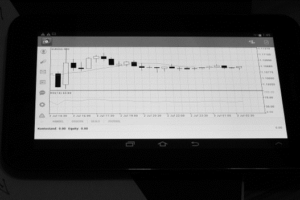
Payment for various services online is guaranteed by the latest security protocols. Online stores and payment services protect the data of users’ payment and debit cards. Most of them review their PCI DSS certification yearly to safeguard user data according to the latest international standards. One of the most modern forms of data protection is tokenization. Let’s consider in more detail what this process is. The use of data tokenization solutions provides an opportunity to use the full functionality of the technology, which ensures the protection of electronic payments with the help of reliable data encryption systems. Tokenization allows you to make payments without revealing your card/account details. Card information (card number/CVV code, etc.) is replaced by a unique digital identifier (token). According to the tokenization definition dictionary, tokens protect personal information and financial transactions by encrypting and transmitting card data. Tokens are generated using a mathematical formula or a generator of random letters and numbers that have no meaning, so an attacker cannot use them for fraudulent purposes.
Why do we need tokenization?
Tokenization maximizes the security of payments and financial transactions while facilitating contactless payments (e.g., smartphone payments). The key advantages of tokenization are ease of cost, safety, and high reliability.
What does the tokenization process look like?
When paying at the cash register or online, the card data is sent to a secure gateway and a particular reader that converts the data into tokens to complete the transaction. Financial information is encrypted and not transmitted directly. This means that your payment and card details are securely protected from hackers. Tokenization is currently the most reliable means of payment in global e-commerce. Tokenization is being actively implemented in the field of electronic commerce. Given the pace of development of contactless payments and technological solutions, we can expect intensive use of this technology in the coming years. Online payments have become commonplace for everyone. However, with the development of electronic commerce, cybercrime is actively growing. Modern online payment services and systems actively implement various security protocols and technologies to protect user data reliably. Tokenization is currently the most secure information protection technology in e-commerce.
What is tokenization in the context of bank card privacy?
Tokenization is a type of encryption. It is used to protect credit card information during online transactions. For example, when paying in the online store of your choice, enter the card number, expiration date, and CVV code in the pop-up window. Here we describe a third-party resource that can store card information. Worse, not protecting your information well enough is bad for you and suitable for hackers. Tokenization technology ensures maximum security of payments on the Internet. Tokenization protects user data during online transactions such as card and smartphone payments. In such transactions, the credit card information is sent through secure gateways and special devices that encode the data into unique tokens. The service then sends this code for processing. This means that the online store where you made the purchase does not have access to your card details. It only knows tokens. Even if a third party captures the unique token for a given transaction, it cannot be used to complete the transaction.
How does data tokenization work?
Tokenization for payment processing requires replacing credit card or bank account numbers with tokens. Tokens are not tied to an account or person. The customer’s Primary Account Number (PAN) is replaced with a randomly generated personalized alphanumeric identifier. Tokenization eliminates the connection between transactions and confidential data and facilitates credit card transactions. Data tokenization maximizes the security of credit card and bank account numbers in virtual storage, allowing organizations to transmit data over wireless networks securely. Companies must use payment gateways to store sensitive data to enable tokenization securely. A payment gateway is a merchant service offered by an e-commerce service provider that allows direct payment or credit card processing. This gateway securely stores credit card numbers and generates random tokens.
Tokenization and encryption
The main difference between tokenization and encryption is that tokenization uses a “token,” while encryption uses a “private key” to protect data. The main problem with data encryption is reversibility, and Encrypted data must be restored to an entire, unencrypted state. Cryptographic security depends on the algorithms used to protect data, and a more complex algorithm means more secure encryption that is harder to crack. However, any encryption is inherently broken. How easily an attacker can decrypt data depends on the algorithm’s strength and the computing power available to the attacker.
For this reason, encryption is best defined as hiding data rather than protecting it. Encryption makes accessing the original information saved in the encrypted data difficult but not impossible. Unlike encryption, data tokenization is irreversible. Tokens cannot be decrypted because the tokenization system replaces sensitive data by matching random data instead of using decryption algorithms. Tokens are placeholders and have no real value. The data is stored elsewhere, such as on a secure external platform. The output data does not enter the computing environment. If an attacker breaks into your environment and gains access to your token, they get nothing. Therefore, tokens cannot be used for criminal activities. PCI and other current security standards do not require organizations to protect tokenized data.
Key benefits of tokenization
Tokenization can provide several key benefits to protect sensitive customer data effectively. Better customer security – Tokenization increases customer trust, providing an extra layer of security for your e-commerce site. Better security and protection against cyberattacks – With tokenization, companies no longer need to collect sensitive information at inbound terminals, store it in internal databases, or transfer data between IT systems. This protects your company from security breaches. Data tokenization improves patient safety. Tokenization makes credit card payments more secure. The bank card industry must comply with various applicable standards and regulations. Tokenization solutions provide an efficient way to effectively protect cardholder data such as transaction data, primary account numbers, and cardholder information. Companies can more easily meet industry standards and better protect customer data. The Payment Card Data Security Standard (PCI DSS) protects PAN data from any organization that accepts, transmits, or stores cardholder data. Failure to do so may result in fines and loss of brand reputation. Tokenization helps organizations achieve PCI DSS compliance by reducing the amount of PAN data stored internally. Organizations only process tokens and do not store sensitive cardholder data, reducing data consumption. Less sensitive data means fewer compliance requirements, which can lead to faster audits.
Tokenization is converting rights to any asset into digital tokens on the blockchain. Developing clear standards for moving assets from the real world to the digital world is in the interests of all players in the global market. This interest is increasing as tokenization offers the benefits of distributed ledger technology and access to crypto-financial markets while retaining all asset functionality. A blockchain can be defined as a chain of transaction records (blocks) where each subsequent document contains information about the previous form. Such chains are created according to specific rules and stored in network nodes. All information in the blockchain is cryptographically protected and has a particular change mechanism. Each blockchain node contains a complete chain of transactions (the entire blockchain). This way, the immutability of information coming from the outside is ensured by its replication in each node. Also, making changes to one transaction (block) in the chain inevitably causes all subsequent blocks to become inconsistent.
A token can be considered a basic unit of account or value issued by a stakeholder in a particular blockchain. Physically, tokens are stored as entries in a distributed ledger in the blockchain. Cryptocurrency is the most popular type of token. Tokenization is converting asset rights into digital tokens on the blockchain. This refers to linking asset information to the blockchain where tokens are issued. By assigning each unit its unique identifier, data about this unit can be recorded in a permanent, tamper-proof register, and further movements of this resource can be tracked. Asset tokenization bridges the digital and physical worlds, providing the highest information security and protection level. For this reason, startups and large financial companies worldwide are fighting to develop a system that will be the next step in the evolution of asset exchange: tools and standards for asset tokenization.






